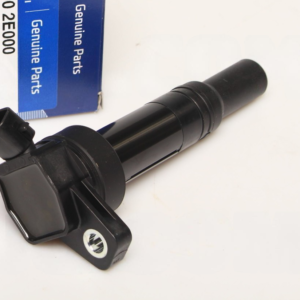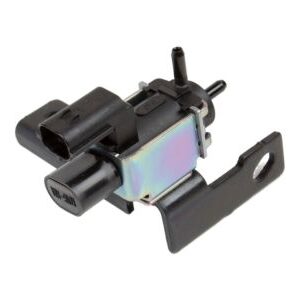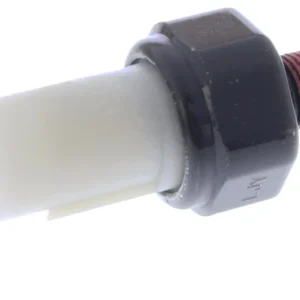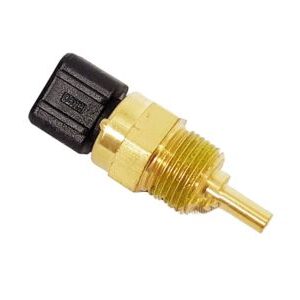Title: Crankshaft Sensor: The Engine’s Precision Navigator
Introduction:
Within the intricate machinery of your vehicle’s engine lies a humble yet indispensable component: the crankshaft sensor. Often overlooked, this small sensor plays a crucial role in the precise coordination of engine functions, ensuring smooth operation and optimal performance. Let’s delve into the world of crankshaft sensors, exploring their function, significance, and the essential role they play in powering your vehicle.
Understanding Crankshaft Sensors:
Crankshaft sensors, also known as crank position sensors or CKP sensors, are vital components of modern engine management systems. Positioned near the crankshaft, they monitor the rotational speed and position of the crankshaft, providing critical data to the engine control unit (ECU) or powertrain control module (PCM).
How Crankshaft Sensors Work:
Crankshaft sensors operate on various principles, including Hall effect, inductive, and magneto-resistive technologies. Regardless of the specific design, their function remains consistent: as the crankshaft rotates, the sensor detects teeth or other markers on the crankshaft’s surface and generates electrical signals proportional to its speed and position. These signals are then relayed to the ECU or PCM, which uses them to determine ignition timing, fuel injection timing, and other engine parameters.
Importance of Crankshaft Sensors:
Crankshaft sensors are integral to the proper functioning of modern engines for several reasons:
1. Timing and Synchronization: By providing real-time data on crankshaft position and speed, crankshaft sensors enable precise coordination of engine functions. This includes timing of fuel injection, ignition timing, and valve operation, ensuring optimal performance and efficiency.
2. Engine Starting: Crankshaft sensors play a crucial role during engine starting. They provide essential feedback to the ECU or PCM, allowing it to determine the engine’s initial position and adjust ignition timing accordingly. This ensures smooth and reliable engine startup, even under challenging conditions.
3. Misfire Detection: Crankshaft sensors help detect engine misfires by monitoring variations in crankshaft speed. A sudden change in crankshaft speed without a corresponding change in engine load may indicate a misfire or timing issue, prompting the ECU or PCM to take corrective action.
4. Fault Diagnosis: Faulty crankshaft sensors can cause a variety of symptoms, including rough idling, engine stalling, and difficulty starting. By monitoring crankshaft sensor signals, technicians can diagnose and troubleshoot engine-related issues, ensuring prompt and accurate repairs.
Maintenance and Replacement:
To maintain optimal engine performance and reliability, it’s essential to properly maintain crankshaft sensors. Over time, crankshaft sensors may become contaminated with dirt, oil, or other debris, leading to inaccurate readings or failure. Regular inspection and replacement of crankshaft sensors as part of routine maintenance can help prevent issues and ensure proper function. Signs of a faulty crankshaft sensor include difficulty starting the engine, rough idling, and illuminated check engine light.
Conclusion:
In conclusion, crankshaft sensors may be small in size, but their impact on engine performance, efficiency, and reliability is significant. By providing essential data on crankshaft position and speed, crankshaft sensors enable precise engine control and synchronization, ensuring smooth operation and optimal performance. So, the next time you hit the road and your engine purrs with precision, remember to appreciate the silent sentinel guiding its every move – the crankshaft sensor.
In stock (can be backordered)
$18,926.31
Title: Crankshaft Sensor: The Engine’s Precision Navigator
Introduction:
Within the intricate machinery of your vehicle’s engine lies a humble yet indispensable component: the crankshaft sensor. Often overlooked, this small sensor plays a crucial role in the precise coordination of engine functions, ensuring smooth operation and optimal performance. Let’s delve into the world of crankshaft sensors, exploring their function, significance, and the essential role they play in powering your vehicle.
Understanding Crankshaft Sensors:
Crankshaft sensors, also known as crank position sensors or CKP sensors, are vital components of modern engine management systems. Positioned near the crankshaft, they monitor the rotational speed and position of the crankshaft, providing critical data to the engine control unit (ECU) or powertrain control module (PCM).
How Crankshaft Sensors Work:
Crankshaft sensors operate on various principles, including Hall effect, inductive, and magneto-resistive technologies. Regardless of the specific design, their function remains consistent: as the crankshaft rotates, the sensor detects teeth or other markers on the crankshaft’s surface and generates electrical signals proportional to its speed and position. These signals are then relayed to the ECU or PCM, which uses them to determine ignition timing, fuel injection timing, and other engine parameters.
Importance of Crankshaft Sensors:
Crankshaft sensors are integral to the proper functioning of modern engines for several reasons:
1. Timing and Synchronization: By providing real-time data on crankshaft position and speed, crankshaft sensors enable precise coordination of engine functions. This includes timing of fuel injection, ignition timing, and valve operation, ensuring optimal performance and efficiency.
2. Engine Starting: Crankshaft sensors play a crucial role during engine starting. They provide essential feedback to the ECU or PCM, allowing it to determine the engine’s initial position and adjust ignition timing accordingly. This ensures smooth and reliable engine startup, even under challenging conditions.
3. Misfire Detection: Crankshaft sensors help detect engine misfires by monitoring variations in crankshaft speed. A sudden change in crankshaft speed without a corresponding change in engine load may indicate a misfire or timing issue, prompting the ECU or PCM to take corrective action.
4. Fault Diagnosis: Faulty crankshaft sensors can cause a variety of symptoms, including rough idling, engine stalling, and difficulty starting. By monitoring crankshaft sensor signals, technicians can diagnose and troubleshoot engine-related issues, ensuring prompt and accurate repairs.
Maintenance and Replacement:
To maintain optimal engine performance and reliability, it’s essential to properly maintain crankshaft sensors. Over time, crankshaft sensors may become contaminated with dirt, oil, or other debris, leading to inaccurate readings or failure. Regular inspection and replacement of crankshaft sensors as part of routine maintenance can help prevent issues and ensure proper function. Signs of a faulty crankshaft sensor include difficulty starting the engine, rough idling, and illuminated check engine light.
Conclusion:
In conclusion, crankshaft sensors may be small in size, but their impact on engine performance, efficiency, and reliability is significant. By providing essential data on crankshaft position and speed, crankshaft sensors enable precise engine control and synchronization, ensuring smooth operation and optimal performance. So, the next time you hit the road and your engine purrs with precision, remember to appreciate the silent sentinel guiding its every move – the crankshaft sensor.
| Warehouse | Inventory at warehouse 2 |
|---|




Get E-mail updates about our latest products and special offers.
Sensors and More is Jamaica’s ultimate online auto parts store. Established in 2020, we specialize in genuine electrical parts for Japanese, Read more…
Reviews
There are no reviews yet.